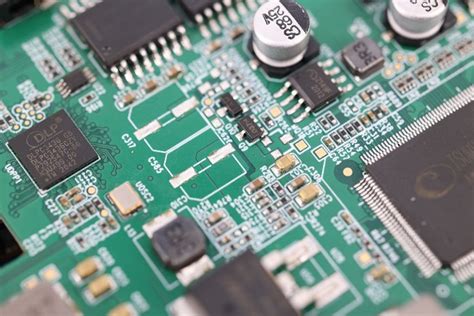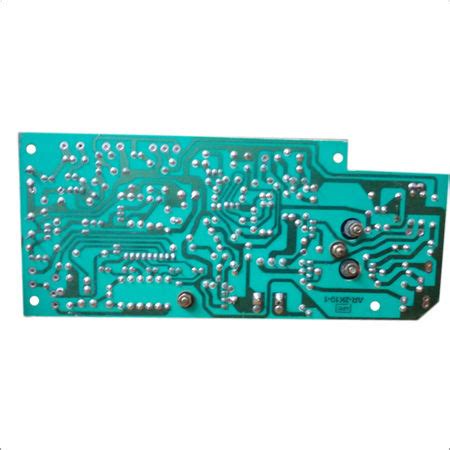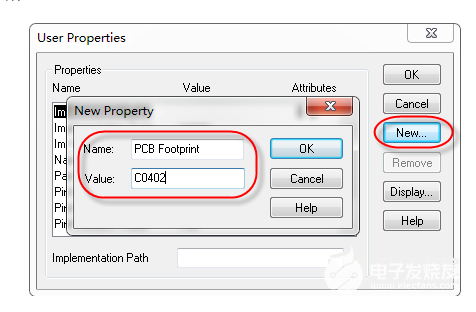Isola pcb material selection
Understanding The Properties Of Isola PCB Materials
When selecting materials for printed circuit boards (PCBs), understanding the properties of Isola PCB materials is crucial for ensuring optimal performance and reliability. Isola, a leading manufacturer of high-performance base materials for PCBs, offers a diverse range of products designed to meet the varying demands of electronic applications.
The selection process involves evaluating several key properties, including thermal, mechanical, and electrical characteristics, to ensure that the chosen material aligns with the specific requirements of the intended application.
To begin with, thermal properties are a critical consideration in the selection of Isola PCB materials.
The ability of a material to withstand high temperatures without degrading is essential, particularly in applications involving high-power components or environments with fluctuating thermal conditions. Isola materials are known for their excellent thermal stability, with options available that offer high glass transition temperatures (Tg) and low coefficients of thermal expansion (CTE). These properties help prevent warping and delamination, ensuring the structural integrity of the PCB under thermal stress.
In addition to thermal properties, mechanical characteristics play a significant role in material selection.
The mechanical strength of a PCB material determines its ability to withstand physical stresses during manufacturing and operation. Isola offers materials with varying degrees of rigidity and flexibility, catering to both rigid and flexible PCB designs. The choice between these depends on the specific application requirements, such as the need for bending or the ability to support heavy components. Furthermore, the material’s resistance to mechanical wear and tear is vital for applications subjected to frequent handling or vibration.
Transitioning to electrical properties, these are equally important in the selection process.
The dielectric constant and dissipation factor of a material influence signal integrity and loss, which are critical for high-frequency applications. Isola materials are engineered to provide low dielectric constants and dissipation factors, ensuring minimal signal distortion and energy loss. This makes them suitable for applications ranging from telecommunications to advanced computing systems, where maintaining signal fidelity is paramount.
Moreover, the moisture absorption rate of a PCB material can significantly impact its performance, particularly in humid environments.
High moisture absorption can lead to changes in electrical properties and mechanical degradation. Isola materials are designed to exhibit low moisture absorption, thereby maintaining their performance and reliability even in challenging environmental conditions. This property is especially important for outdoor applications or those exposed to varying humidity levels.
In addition to these core properties, other factors such as cost, availability, and environmental compliance may influence the selection of Isola PCB materials.
While high-performance materials may offer superior properties, they often come at a higher cost. Therefore, balancing performance requirements with budget constraints is essential. Furthermore, ensuring that the selected materials comply with environmental regulations, such as RoHS and REACH, is crucial for sustainable and responsible manufacturing practices.
In conclusion, understanding the properties of Isola PCB materials is fundamental to making informed decisions in the material selection process. By carefully evaluating thermal, mechanical, and electrical characteristics, along with other considerations such as cost and compliance, designers can select the most appropriate material for their specific application needs. This not only enhances the performance and reliability of the final product but also contributes to the overall success of the electronic system.

Comparing Isola PCB Materials For High-Frequency Applications
When selecting materials for high-frequency applications, the choice of printed circuit board (PCB) substrate is crucial to ensure optimal performance. Among the various options available, Isola PCB materials have gained significant attention due to their advanced properties and reliability. Understanding the differences between these materials can aid in making an informed decision that aligns with specific application requirements.
Isola, a leading manufacturer of PCB laminates, offers a range of materials designed to meet the demands of high-frequency applications.
These materials are engineered to provide excellent electrical performance, thermal stability, and mechanical strength. As high-frequency applications often involve complex signal integrity challenges, selecting the right Isola material can significantly impact the overall functionality and efficiency of the electronic device.
One of the primary considerations when comparing Isola PCB materials is their dielectric constant (Dk).
The dielectric constant is a measure of a material’s ability to store electrical energy in an electric field. For high-frequency applications, a lower dielectric constant is generally preferred as it reduces signal loss and enhances signal speed. Isola offers materials with varying dielectric constants, allowing designers to choose a substrate that best suits their specific frequency requirements.
In addition to the dielectric constant, the dissipation factor (Df) is another critical parameter to consider.
The dissipation factor indicates the amount of energy lost as heat in the dielectric material. A lower dissipation factor is desirable for high-frequency applications as it minimizes signal attenuation and power loss. Isola’s high-frequency materials are designed to exhibit low dissipation factors, ensuring efficient signal transmission and reduced thermal issues.
Thermal management is another essential aspect of high-frequency PCB design.
As electronic devices operate at higher frequencies, they tend to generate more heat, which can affect performance and reliability. Isola materials are engineered to offer excellent thermal conductivity, allowing for effective heat dissipation. This property is particularly important in applications where maintaining a stable operating temperature is critical to prevent component failure and ensure long-term reliability.
Furthermore, the mechanical properties of Isola PCB materials play a significant role in their suitability for high-frequency applications.
These materials are designed to provide robust mechanical strength, ensuring durability and resistance to physical stress. This is particularly important in applications where the PCB may be subjected to mechanical vibrations or thermal cycling, as it helps maintain the integrity of the circuit and prevents potential failures.
Moreover, Isola’s commitment to innovation and quality assurance ensures that their materials meet industry standards and regulatory requirements. This reliability is crucial for high-frequency applications, where even minor deviations in material properties can lead to significant performance issues. By choosing Isola materials, designers can have confidence in the consistency and quality of their PCBs.
In conclusion, selecting the appropriate Isola PCB material for high-frequency applications involves careful consideration of various factors, including dielectric constant, dissipation factor, thermal management, and mechanical properties. By understanding these parameters and their impact on performance, designers can make informed decisions that enhance the efficiency and reliability of their electronic devices. Isola’s range of high-frequency materials offers a comprehensive solution for meeting the demanding requirements of modern electronic applications, ensuring optimal performance and long-term success.

Cost-Effective Isola PCB Material Selection For Prototyping
When embarking on the journey of prototyping printed circuit boards (PCBs), selecting the appropriate material is a critical decision that can significantly impact both the performance and cost-effectiveness of the final product. Among the myriad of options available, Isola PCB materials have emerged as a popular choice due to their reliability and versatility. However, navigating the selection process requires a careful balance between cost considerations and material properties to ensure optimal results.
To begin with, understanding the specific requirements of your prototype is essential.
This involves evaluating factors such as signal integrity, thermal management, and mechanical stability. Isola offers a diverse range of materials, each tailored to meet different performance criteria. For instance, if your prototype demands high-frequency performance, materials like Isola’s FR408HR or I-Tera MT40 may be suitable due to their low dielectric constant and low loss characteristics. These materials are designed to support high-speed digital and RF/microwave applications, making them ideal for advanced prototyping needs.
However, high-performance materials often come with a higher price tag.
Therefore, it is crucial to assess whether the enhanced properties are necessary for the prototype stage or if a more cost-effective option could suffice. For many prototyping applications, standard materials such as Isola’s FR4 can provide a satisfactory balance between performance and cost. FR4 is widely used due to its good electrical insulation properties, mechanical strength, and affordability. By opting for a standard material like FR4, you can significantly reduce costs without compromising the basic functionality of the prototype.
Moreover, considering the manufacturing process is another vital aspect of material selection.
The compatibility of the chosen material with existing fabrication processes can influence both the cost and feasibility of the prototype. Isola materials are generally designed to be compatible with standard PCB manufacturing techniques, which can help streamline the prototyping process and minimize additional expenses. Ensuring that the material aligns with the capabilities of your manufacturing partner can prevent costly delays and rework.
In addition to performance and manufacturing considerations, environmental factors should not be overlooked.
Isola is committed to sustainability, offering materials that comply with environmental regulations such as RoHS and REACH. Selecting eco-friendly materials not only aligns with global sustainability goals but can also future-proof your design against potential regulatory changes. This foresight can be particularly beneficial in industries where environmental compliance is a critical concern.
Furthermore, engaging with material suppliers and leveraging their expertise can provide valuable insights into cost-effective material selection.
Suppliers like Isola often offer technical support and guidance, helping you navigate the complexities of material properties and their implications for your specific application. By collaborating with experts, you can make informed decisions that optimize both performance and cost.
In conclusion, selecting the right Isola PCB material for prototyping involves a careful evaluation of performance requirements, cost constraints, manufacturing compatibility, and environmental considerations. By balancing these factors, you can achieve a cost-effective solution that meets the needs of your prototype while laying a solid foundation for future development. As the landscape of PCB technology continues to evolve, staying informed about material advancements and industry trends will be key to maintaining a competitive edge in the prototyping process.

Environmental Considerations In Choosing Isola PCB Materials
When selecting materials for printed circuit boards (PCBs), particularly those manufactured by Isola, environmental considerations have become increasingly significant. As the electronics industry continues to grow, the impact of PCB production on the environment cannot be overlooked. Therefore, understanding the environmental implications of material choices is crucial for manufacturers aiming to reduce their ecological footprint while maintaining high performance and reliability.
To begin with, one of the primary environmental concerns in PCB material selection is the use of hazardous substances.
Many traditional PCB materials contain brominated flame retardants, which can release toxic compounds during manufacturing and disposal. Isola has responded to this concern by developing halogen-free materials that minimize the release of harmful substances. These materials not only meet stringent environmental regulations but also offer comparable performance to their halogenated counterparts, making them a viable option for eco-conscious manufacturers.
In addition to reducing hazardous substances, energy consumption during the production process is another critical factor.
The manufacturing of PCBs is energy-intensive, and the choice of materials can influence the overall energy efficiency. Isola has made strides in developing materials that require less energy to process, thereby reducing the carbon footprint associated with PCB production. By selecting materials that are easier to laminate and cure, manufacturers can achieve significant energy savings, contributing to a more sustainable production cycle.
Moreover, the recyclability of PCB materials is an essential consideration for minimizing environmental impact.
Traditional PCBs are often difficult to recycle due to the complex mix of materials used. However, Isola has been at the forefront of developing materials that facilitate easier recycling. By using materials that can be more readily separated and recovered, the end-of-life management of PCBs becomes more efficient, reducing the amount of electronic waste that ends up in landfills.
Furthermore, the durability and longevity of PCB materials play a role in their environmental impact.
Materials that offer enhanced durability can extend the lifespan of electronic devices, thereby reducing the frequency of replacements and the associated waste. Isola’s advanced materials are designed to withstand harsh operating conditions, ensuring that devices remain functional for longer periods. This not only benefits consumers by providing more reliable products but also contributes to environmental sustainability by decreasing the demand for new resources.
In addition to these considerations, regulatory compliance is a driving force behind the selection of environmentally friendly PCB materials.
Governments worldwide are implementing stricter regulations to limit the use of hazardous substances and promote sustainable practices. Isola’s commitment to compliance with these regulations ensures that their materials meet global environmental standards, providing manufacturers with peace of mind and facilitating access to international markets.
In conclusion, the selection of Isola PCB materials with environmental considerations in mind is a multifaceted process that involves evaluating hazardous substance content, energy consumption, recyclability, durability, and regulatory compliance. By prioritizing these factors, manufacturers can make informed decisions that align with both their performance requirements and environmental responsibilities. As the industry continues to evolve, the importance of sustainable material choices will only grow, making it imperative for manufacturers to stay informed and proactive in their approach to PCB material selection







